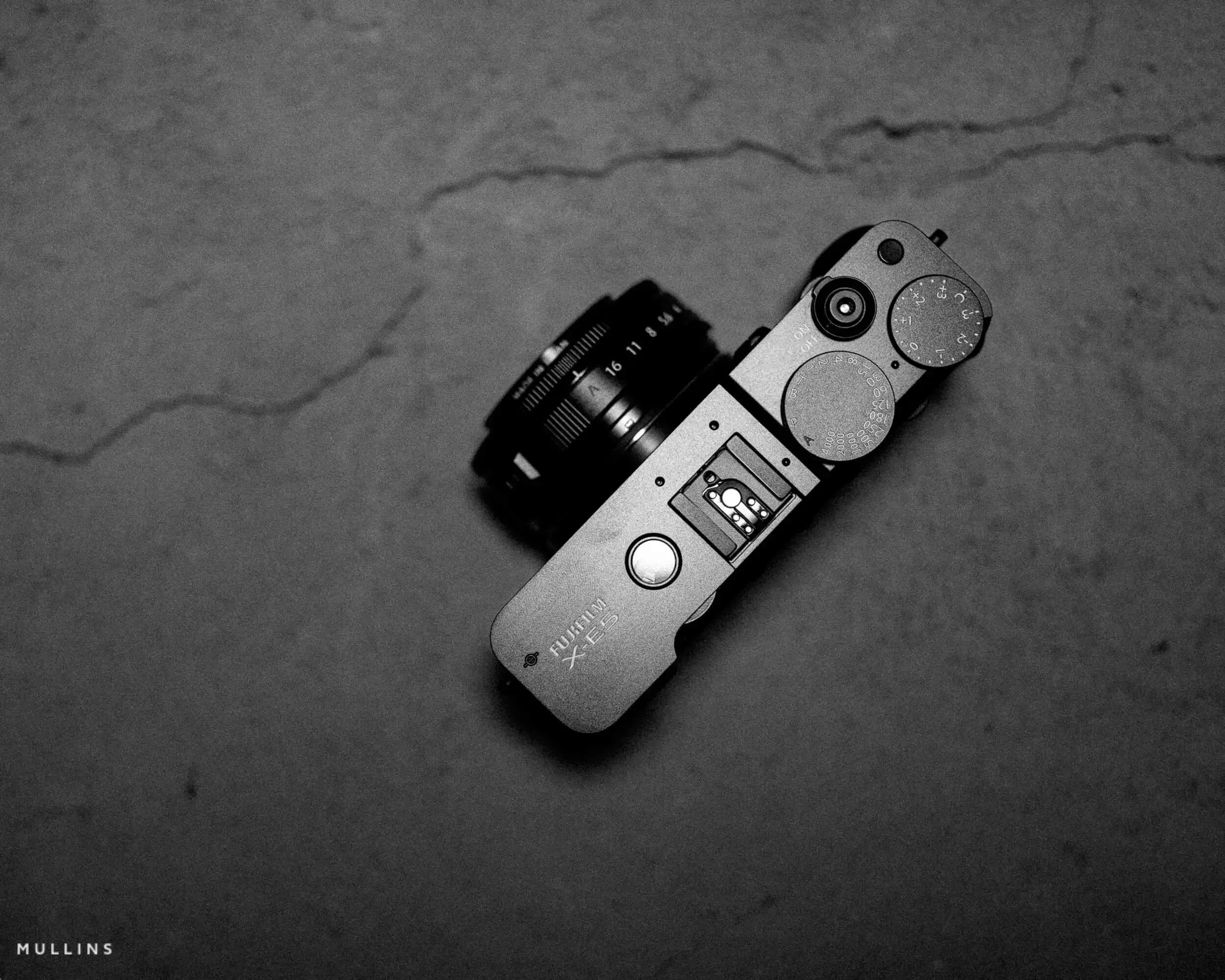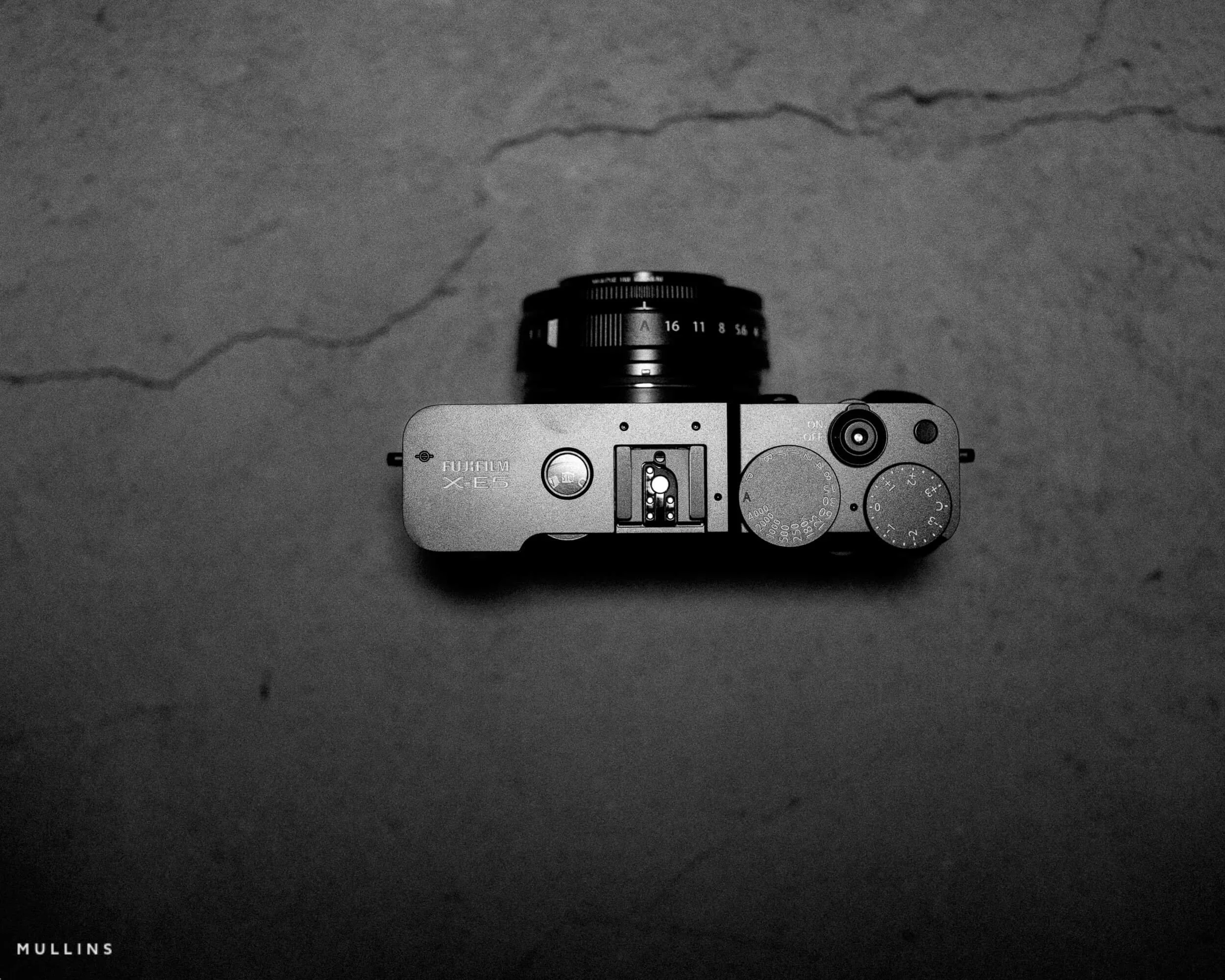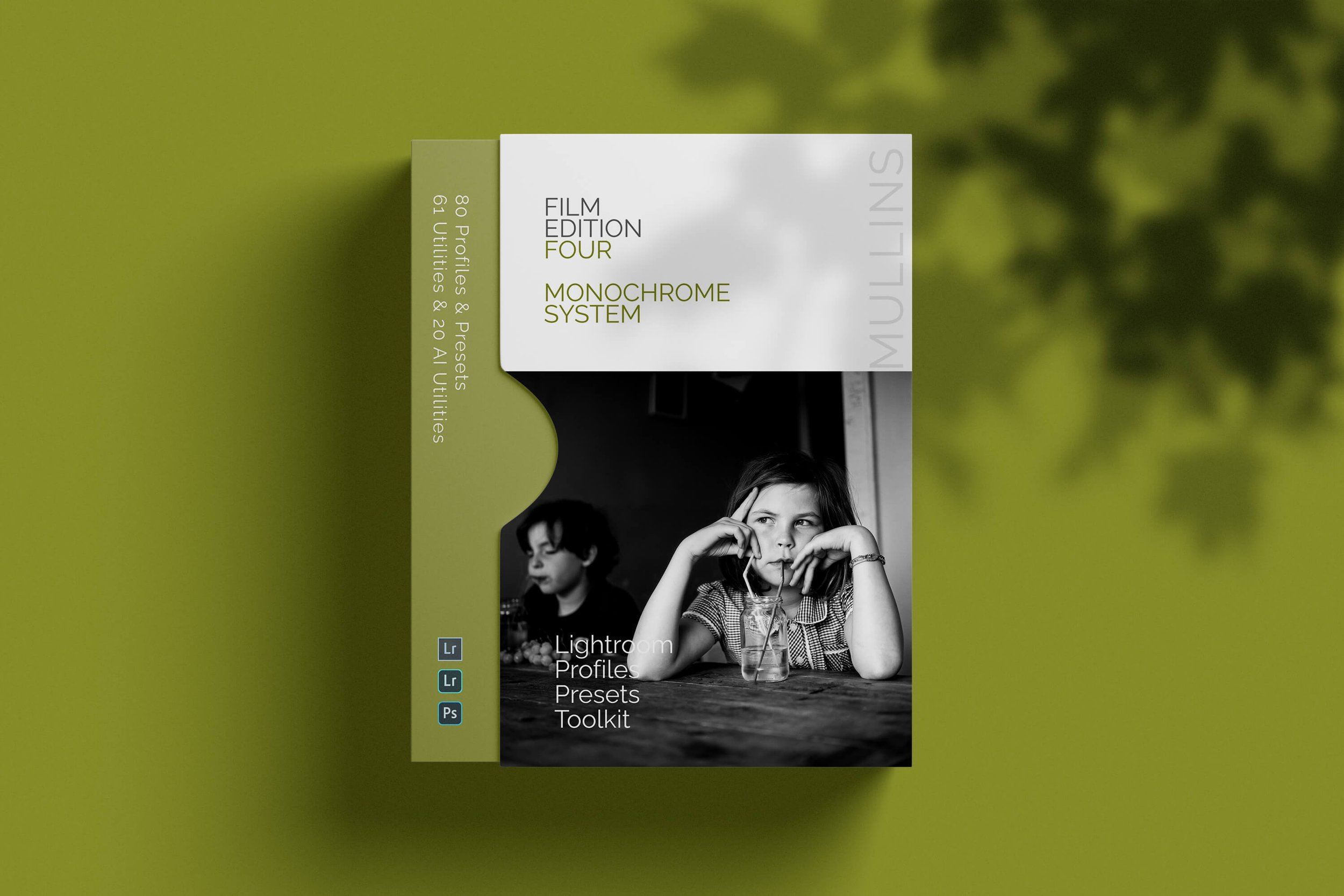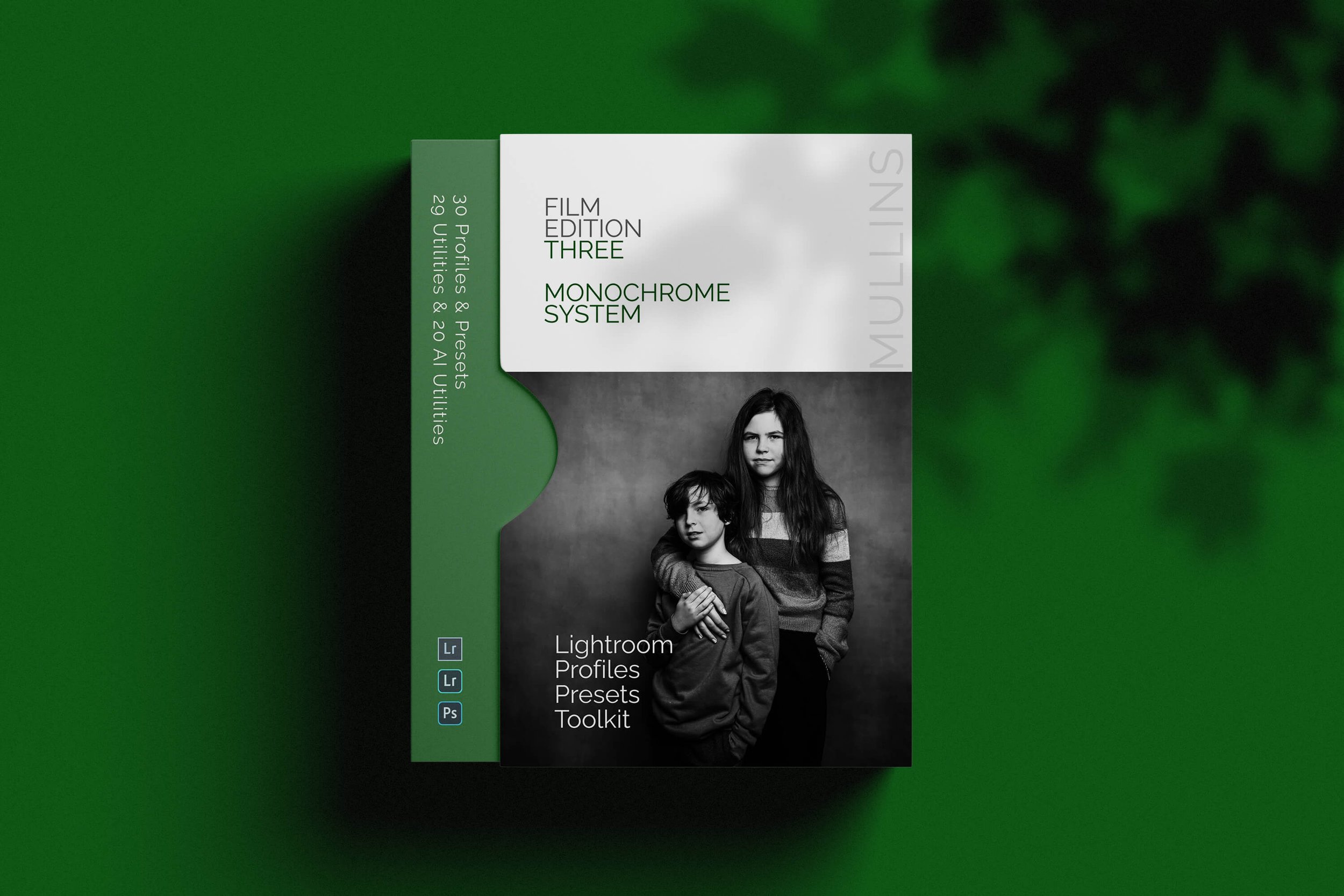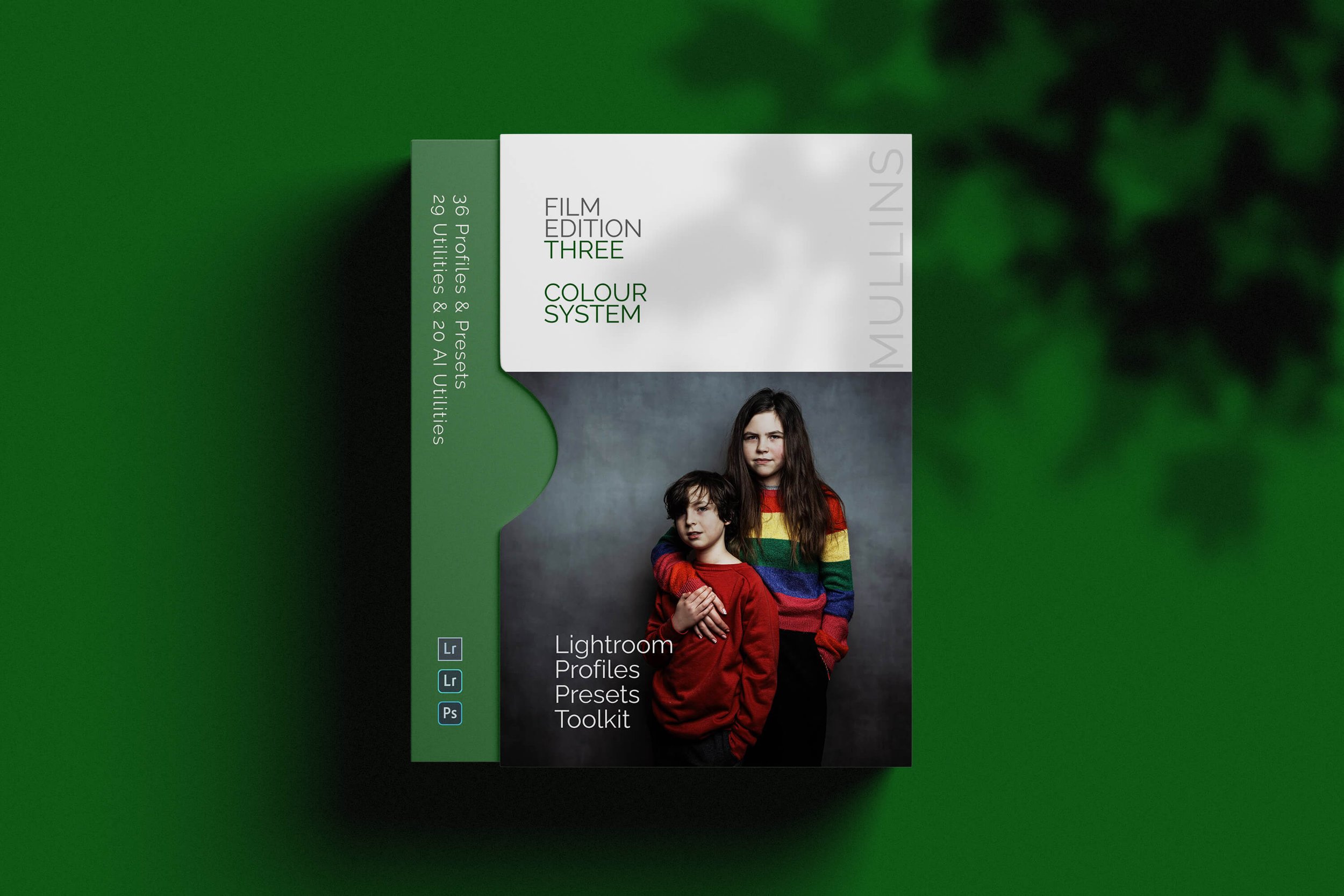Fujifilm X-E5 Sample Photos – My First Shots with the New Camera
What I cover in this post
First impressions of the Fujifilm X-E5
Using the 23mm f/2.8 R WR pancake
The new film simulation dial in practice
Retro EVF overlay thoughts
Monochrome sample images and light edits with my presets
First Impressions: Fujifilm X-E5 & 23mm f/2.8 Pancake Lens
I’ve had the Fujifilm X-E5 in my hands for just a few days – not long enough for a full review, but certainly enough to get a feel for what it offers, and, well... to start falling for it a “bit”.
Fujifilm’s X-E line has always had that understated charm. Rangefinder-style, compact, not trying too hard. The X-E5 continues that tradition, but this time it feels a little more deliberate. More polished. I’d even say it feels more confident in its skin. And the timing couldn’t be better – this release also introduces the XF 23mm f/2.8 R WR pancake lens, which is exactly the sort of lens a body like this deserves.
A First Session – Ponies, Patience & Pancake Glass
I used the X-E5 in the brief time I had it on loan, photographing my daughter while she was schooling her pony, Lilly.
There’s something about photographing familiar, slower-paced moments that gives you a better sense of a camera’s rhythm. You’re not rushing. You’re just observing. And this camera really suits that.
The XF 23mm f/2.8 held up beautifully. It’s incredibly small – truly pocketable, especially on a body as slim as the X-E5. It’s weather-resistant, too, though thankfully the light held up for us.
Autofocus is snappy and quiet, and image quality... well, it’s sharp. Maybe not clinical, which is a good thing.
That New Film Simulation Dial
Let’s talk about one of the X-E5’s most interesting additions: the dedicated Film Simulation dial. At first glance, it might feel like a gimmick – just another dial on the top plate. But it’s more useful than it appears.
Not only can you quickly flip through your favourite sims, but for the first time on an X-E camera, you can assign your own custom film simulation recipes to it. That’s a big deal. You can load up to four custom looks and switch between them without diving through menus. It genuinely changes how you approach a scene.
For me, it meant I could capture a few moments of my daughter adjusting the stirrups in one look, and then switch to a monochrome preset for a quiet detail shot of Lilly’s bridle. No friction. Just instinct.
That Retro Viewfinder Look
There’s also something... charming about the viewfinder. You’re not getting the hybrid OVF/EVF of the X-Pro line, but you do get a cool new retro-styled overlay in the EVF. It’s purely aesthetic, but I love it. It gives a nod to those vintage rangefinders we all get a bit misty-eyed about – while still delivering all the modern EVF benefits: clarity, focus peaking, simulation preview.
You can switch the overlay off, of course, but I found myself keeping it on. It somehow makes the act of looking through the camera feel more tactile, if that makes sense. A reminder that photography is as much about feel as it is about spec sheets.
Some Notes on Handling
The X-E5 doesn’t have a large grip, as such, but it sits nicely in the hand – especially with the 23mm pancake attached. That combo is so light you almost forget you're carrying it.
One little thing I noticed: the shutter sound is lovely. Quiet, but not too quiet. It has that little ‘snick’ to it that feels deliberate. Not important, perhaps, but again – it adds to the character.
Battery life felt decent in my short time with it. Same NP-W126S as other models, so nothing new there, but the camera felt efficient.
The 23mm f/2.8 R WR Pancake – A Few More Thoughts
It’s worth circling back to this lens. The 23mm focal length (35mm equivalent) is about as classic as it gets. Great for street, travel, environmental portraits... or just everyday life.
The f/2.8 aperture might sound modest in a world full of fast primes, but on a camera like this, it makes perfect sense. It keeps things compact, it’s easier to zone focus with, and you’re unlikely to miss the extra stop unless you’re shooting in near darkness.
It doesn’t quite render like the f/2 version – and definitely not like the f/1.4 – but what it lacks in creamy bokeh, it makes up for in speed, size, and convenience.
In the sample images below, you will see some images taken on this new lens, and some taken on The Viltrox AF75mm F1.2 Lens.
A Note About the Editing of These Photographs
All of the images in this post have been lightly edited in Lightroom using my own Film Presets. I wasn’t going for anything overly stylised – just a natural feel with a subtle nod to film aesthetics. That’s usually how I work, especially when I’m trying to let the character of a new camera and lens come through.
I’ve built these presets over time, mainly to speed up my workflow and give me a consistent look. Some lean towards muted tones, others bring a bit more contrast or warmth depending on the light and subject. For this set, I mostly stuck to the more neutral colour looks, with the occasional soft monochrome thrown in.
Sample Images






Final Thoughts (For Now)
This isn’t a review – not yet, anyway. I haven’t used the camera long enough for that (and Fujifilm wants it back), and I certainly haven’t explored all its features. But early signs are good. Very good, actually.
There’s a nice balance here between old-school looks and modern functionality. Between size and capability. And if you’re someone who values a small camera that doesn’t compromise on image quality, the Fujifilm X-E5 – especially paired with the new 23mm f/2.8 pancake – might be exactly what you’re looking for.
If I do end up keeping it longer, I’ll be back with a deeper dive. But for now, I’ll just say this: it made me want to go out and shoot, and that’s always a good sign.
Fujifilm Workshops with Kevin Mullins
I offer a variety of in-person photography workshops, specifically for Fujifilm users. Check out the latest ones available:
FAQ
-
Yes. The compact body and the 23mm f/2.8 pancake make a discreet, quick combo, and the film simulation dial lets you switch looks quickly without menu diving.
-
You can assign your own custom film simulation recipes to the dial and switch between them on the fly, which speeds up shooting and keeps you in the moment.
-
Mostly the XF 23mm f/2.8 R WR pancake. A few frames were made with the Viltrox AF 75mm f/1.2 for comparison.


